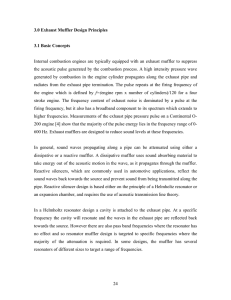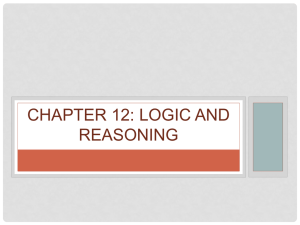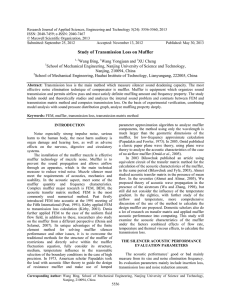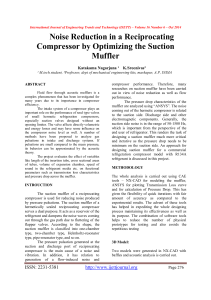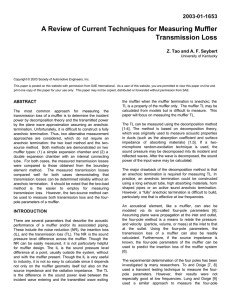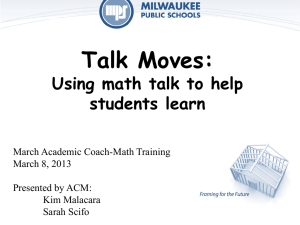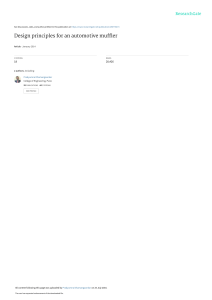TOC 5 and 8
advertisement
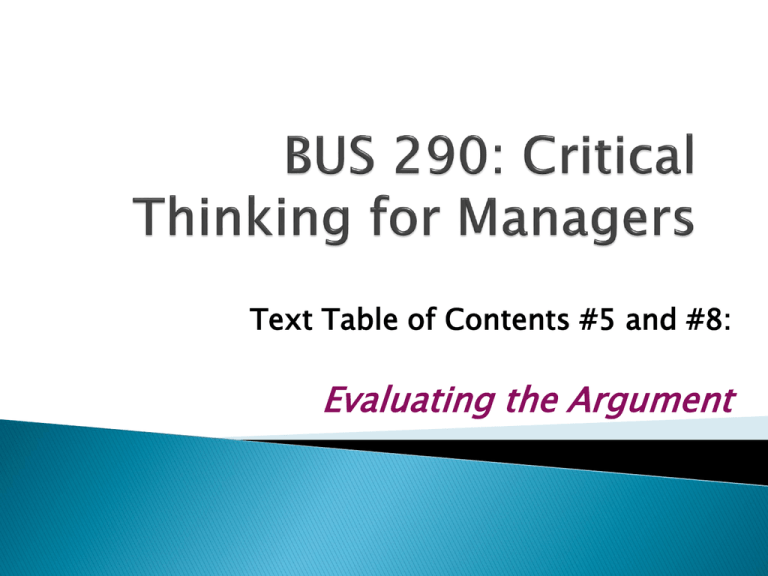
Text Table of Contents #5 and #8: Evaluating the Argument Arguments intend to convince us to accept a conclusion – i.e., a position, claim, belief, etc. Why does the author want us to accept this conclusion? The reasons tell us why that conclusion should be accepted. Accepting the conclusion based on the reasons is reasoning. But there are some presumptions we need to make in order to accept the reasoning. Are the reasons true? Is the logical connection between the reason and conclusion strong? ◦ The conclusion must be true or probably true if the reason is true. Are the reasons relevant to the conclusion? ◦ Truth of conclusion depends on the reason. Circularity - the reason can’t depend on the conclusion ◦ Can’t say “the reason because of the conclusion.” Infer deduce or conclude (information) from evidence and Strength of Logic = Validity of Inference reasoning rather than from explicit statements (Oxford dictionary) ◦ does not refer to truth of premise or conclusion ◦ refers to the form of the inference ◦ i.e., how the inference is drawn A word about inference - induction vs. deduction induction – results in probable conclusion deduction results in certain conclusion All fruits are sweet. A banana is a fruit. Therefore, a banana is sweet. For the conclusion to be necessarily true, the premises need to be true. Strong Logic ◦ The conclusion is true or probable if the reasons are true. ◦ Ask yourself: Could the conclusion be wrong if the reasons are true? R1. When a muffler gets old the baffles loosen. R2. Loose muffler baffles often rattle when idling. R3. My muffler is old. R4. A rattling noise is coming from underneath my car in the back or middle area when idling. Conclusion: ◦ The rattling sound is coming from my muffler. ◦ Could the rattling not be coming from the muffler even if the reasons are all true? ◦ Could anything else be explained by the reasons? State data show that average state funding for colleges has shrunk by 20-30% in the last five years. Based on recent alcohol industry data, selling alcohol on campus has increased revenues by several percentage points for colleges that permit on-campus alcoholic beverage consumption. Conclusion: ◦ Colleges can offset reduced state funding by permitting alcohol consumption in college-operated on-campus venues. Leading from true premises to a false conclusion. All apples are fruit. (correct) Bananas are fruit. (correct) Therefore, bananas are apples. (incorrect) Weak Logic ◦ The reasons are true ◦ But the conclusion does not follow Students who served in the military deserve a beer. It (alcohol consumption on campus) will create a more diverse environment on campus. Conclusion: ◦ College students should be able to consume liquor. Logical strength is: ◦ Does the conclusion have to be true (or probable) if the reason(s) is(are) true? Relevance is: ◦ Do the reasons have to be true for the conclusion to be true? In the muffler example assume that the car has nothing else in the area described that could come loose and rattle. R1. When a muffler gets old the baffles loosen. R2. Loose muffler baffles often rattle when idling. R3. My muffler is old. R4. A rattling noise is coming from underneath my car in the back or middle area when idling. Conclusion: ◦ The rattling sound is coming from my muffler. ◦ Could the muffler be rattling and it not be broken baffles? ◦ Got the right conclusion – but has nothing to do with reasons. When the conclusion serves to support a reason. ◦ Typically the conclusion is contained in a single assumption. Most obvious circularity when the conclusion is simply another way of stating (or very similar to) the reason. ◦ Concl: You can’t give me a C. ◦ R1. I am an A student. Another way of stating the argument is: You can’t give me a C because I am not a C student. ◦ Concl: Stealing is wrong. ◦ R1. There is a law against stealing. ◦ Something is illegal because it’s “wrong” to do it. Is the reason true? ◦ Do I have have to assume anything to accept the reason? Is the reasoning logically strong? ◦ Could the conclusion be unlikely if the reason is true? ◦ Could a different conclusion be true due to the reason? Is the reason relevant to the conclusion? ◦ Does the reason have to be true for the conclusion to be true? ◦ Could the conclusion be true due to some other reason? Is there any circularity in the reasoning? ◦ Do the reason and conclusion assume each other? ◦ Do the conclusion and reason seem to be the same or similar? Assumptions are a key issue. Assumptions are key – there is a potential problem in the reasoning / logic (fallacy) if: ◦ A reason is an assumption – i.e., it does not refer to any data, facts, or evidence (truth). ◦ A reason requires an assumption to connect it to the conclusion (relevance). ◦ A reason assumes or depends on the conclusion (circularity). ◦ The conclusion requires an assumption not stated in a reason to be accepted (relevance). According to ARQ - most fallacies in the reason or reasoning relate to: ◦ Mistakes or problems with assumptions required (truth and /or relevance). ◦ Distractions from the reason or conclusion (relevance). distractions often require making inappropriate assumptions to link to conclusion. Reasons depending on conclusion being true (circularity). Ad hominem – attack on person not reason (relevance). Slippery slope – assuming conclusion applies to other un-related situations (relevance). Appeal to emotions – using “loaded’ terms to frame a reason or position (relevance). Appeal to popularity – if a group of people accept it everyone should (relevance). Fallacies in commercials and pop culture False Dilemma A short animation of some fallacies. Appeal to authority – citing an authority without evidence of authority’s expertise related to the issue (relevance). Word play or equivocation – intentionally use ambiguity to support reason (relevance). Appeal to ignorance – absence of reason for something is proof against it (relevance). Appeal to perfect solution – attack conclusion for not solving all problems. Glittering generalities - using ambiguous but “positive” terms to get acceptance. Straw-man – distorting or misstating a point to attack a point that doesn’t exist. Red herring – diverting attention to a nonrelated topic. Explain by naming – naming it doesn’t explain it. Identify issue, conclusion, reasons. Does conclusion identify a specific / concrete advantage or disadvantage ? For each reason ask: ◦ What do I have to believe / assume to accept it as true? ◦ What do I have to believe for it to support conclusion? Do these beliefs / assumptions make sense - are they reasonable? Have any of the reasons distracted me from the relevant reasons by appealing to emotions? What made Harry Needamore, the chief executive of Slippery Oil, so obsessed with making money that he was willing to mislead investors and falsify accounting information such that his deception cost innocent investors millions of dollars? He is a psychopathic personality. It seems that all such extreme cases of corporate fraud come from this cause, as Mr. Needamore’s case so clearly demonstrates.

